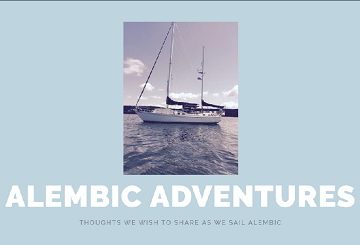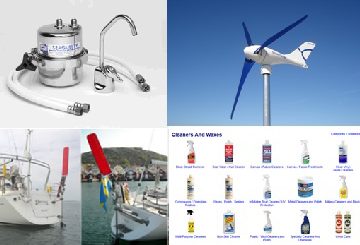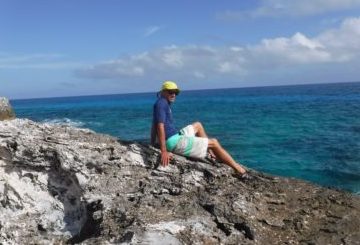Snug Harbor and Mamitupu
Being officially out of contact is exciting. A mixture of emotions is swirling in my brain. Thrill, fear, uncertainty, novelty, anticipation, eagerness, and openness take turns controlling my brain. Out of contact means that we have no wifi, no cellular coverage, no VHF contact because the nearest rally boat, is more than 20 miles away, and even our SSB was out of range. We do have our inReach device that allows us to text short messages. Being out of touch with everyone familiar allows us to get in touch with the locals here.
Our rally of 25 boats is hanging out in the San Blas Islands for three weeks and we can sail about as we please. Most of the boats are gathered in the Holandes and Lemmon Cays where the snorkeling is pristine, and the Happy Hours happen daily. While we love this group and participating in these activities, Bill and I were eager to venture out to the authentic Guna villages to learn about their way of life. A few others are doing the same, but we are the farthest east.
Three days ago, we were the only rally boat in Rio Diablo, but I think others will eventually make it here. This community no longer practices the Guna way of life; they are so modernized now that they are actually having a Super Bowl party next week!

This family came to our boat full of smiles, shared a bunch of laughs with us, and left giggling as they paddled
From Rio Diablo, we sailed to Snug Harbor and remained the only boat in the anchorage. The closest islands surrounding us were uninhabited, but you could see Playon Chico in the distance. We were visited by many dugout canoes. My favorite was a pair of boats, tied together. The first had a Padre and Madre (father and mother) and eight children, one boy and seven girls, all about 9-15, and the other trailing boat had two lazy older boys without paddles and two adorable white puppies. They came to welcome us to the neighborhood. All were full of giggles and silliness as they explained that they were all one family. I told them that I had a huge family too, and that I had six brothers! The seven girls burst into hysterics and sympathy for me. Our language barrier made it impossible for me to tell them that my six brothers were wonderful siblings. It is becoming easier to say “Hello, How are you?” and other simple phrases in Spanish, but I have very few Guna words down at this point. And their Spanish is no better than mine. They clung to our gunwales (edge of our boat) and chatted with lots of hand motions and repetition until we understood vaguely what they were trying to say. When I offered cold water, they fell all over themselves to pass the cold beverages around. One child kept saying “Bastia” softly with an impish grin. We didn’t understand this word, but thought that he might be saying Boston, seeing we were from the northern US. So we launched into hand motions and words, telling them that we lived near Boston and that our home was covered in snow. They have no word for snow, so they call it “like ice”. We even gave them a tee shirt that showed handicapped skiers on snow. This made them all laugh again hysterically and we watched them pass the tee shirt up and down the line as Madre and Padre paddled slowly home. I looked up Bastia in my guide book and found out it meant candy. Poor kid; he was asking for candy, and all he got was a tee shirt to share with 7 sisters!
Next stop: Mamitupu. We are still here. I may not leave. We are so off the beaten path at this point; we haven’t seen a single sailboat since we left Snug Harbor, only dugouts. Entering this anchorage was challenging as we needed to sail in weaving between reefs with me on the bow for water depth watch and Bill at the helm.
The GPS chart plotter was useless, showing reefs where there was deep water, and vice versa. We could never have done that in low sunlight. As we rounded the corner of the island, children and adults ran to the shore, wildly waving. I was not sure if they were warning us of the reefs or welcoming us. As we dropped anchor, we could see that the children still kept examining this new boat in the harbor and many greeted us as we dinghied to shore. Three teenage boys offered to take us around the village. Two of the boys seemed eager to learn Spanish and English words for things, and kept repeating our words. The third boy saw a few cute girls walking by, and slinked away; the girls were much more intriguing than we were!
This village has about 1200 people, packed into a tiny island. Babies and small children peaked around every hut opening, curious to see such odd looking people. Most women were sitting out in the sun sewing molas, while the men seemed busy walking by us briskly. Most of them had spent the day rowing, singlehandedly, across the bay in their hand built ulus, hiking up into the rainforest to harvest bananas, mangos, yucca, or materials to use for building huts.
Then they paddled back with their ulus packed so full they looked like they were sinking. In fact, they were sinking! Constant bailing was necessary. Some bailed with their feet while paddling with their arms.
The boys brought us to the two schools but these seemed to be closed. One explanation was that they close for 3 months for harvest season. The Congresso was an impressive large hut, used for daily community meetings at 5 pm. All community members older than 18 must attend to hear the plans and grievances of the island. Chiefs of the island run the meetings, assigning tasks for members to keep life running smoothly. While the San Blas are officially part of Panama, the Panamanian government allows them to be autonomous, which seems to be working out nicely.
We were welcomed into both of the boys’ homes. In each home, they quickly found two plastic chairs for us to sit on, while most of the family members stood. Grandmothers hung in hammocks, and babies played naked on the dirt floor. There were no tables, beds, toys, curtains, or anything! Just bare huts with hammocks hanging out of the way, waiting to be hung more strategically for night use. One mom was sewing a mola when her one year old climbed into her lap to nurse, then climbed back down again to play in the dirt. The mom continued chatting with us, unfazed by the child’s clambering.
They offered us food, but we declined. I wish I could have said yes, both to be polite, as well as to sample what they eat, but we are not confident our delicate digestive systems are up for the challenge of this environment. Hand washing seems to be a foreign concept, refrigeration is nonexistent here, and food is stored and prepared on or near the dirt. This made me realize that our tidy lifestyle actually makes us weaker, rather than stronger!
While strolling through the village, we met Pablo, a Guna who speaks some English. We had heard about his coconut press which made coconut oil, and asked him how that worked. When he told us the machine was broken, I quickly jumped in to say that Bill was an Engineer, and could take a look at it. He asked us to come back the next day for a look. Bill later almost glared at me and said “why did you sign me up for this?” I knew that helping the Gunas would be a rewarding experience, and that Bill would be grateful in the end that I jumped in with the offer. And I was right!
Sure enough, working on the generator the next day was a gratifying experience for Bill. He felt like a “surgeon in a teaching hospital” as the village men gathered to watch this gringo operate on their machine. At one point, Bill was blowing on a small tube, seeing if the seals were tight, and I heard the men ask “why is he smoking it?” After at least an hour of disassembly, cleaning, and reassembly, the generator fired right up. It turned out that the coconut press worked fine, it was this generator that held up the works.
While Bill performed magic on the generator, I tried to connect with the community. Knowing that food is an important commodity, I had baked cornbread aboard Alembic that morning to share in the village. First, I offered it to a few children, then their moms, and soon old folks began emerging from huts to come sample this “strange food”. All eagerly reached out their hands for a sample. Soon, I was rewarded with the best looking mangoes, delivered to me by a naked little cherub.
When the bread was gone, I pulled out a bit of string I had in my bag and began placing it in the hands of small children, about 4-6 years old. I guided them wordlessly, with a light touch on their shoulder, into a huge circle, so the ends of the string could be tied in a knot while the children held the string in a circle. One bead was tied on the string, and could freely slide along the circle if the children could figure out how to make this happen. With a little encouragement, they discovered while one child held his hand high and the next held his hand low, the bead would slide down. Then the low hand had to go up, etc, so the bead could continue to travel in the circle. Watching the delight in these children was heartwarming. They have no TV, toys, bikes, or even art supplies. But they have imaginations, and eagerness, and teamwork and enormous gratitude. The boys continued to play this game for a long time, shrieking with delight as they gained power over the concept.
Last night, Pablo, his lovely wife, Jacinta, and their 3 year old grandson came to Alembic for a visit. Jacinta showed me how to prepare coconut and a few other local vegetables, while the boy played our Ukulele and Pablo and Bill had a few beers. I wish we had more time to stay at this island, as I definitely could see us fitting in to this community. Our acceptance was evident this morning, as we strolled through the village for the third day. This time, rather than peaking from behind hut entrances, the children bounced out in our path to yell “Ola!” as we walked by. Everyone seemed to greet us warmly today, not shyly as they had the first day.
I’m not looking forward to raising our anchor today…



















































































































